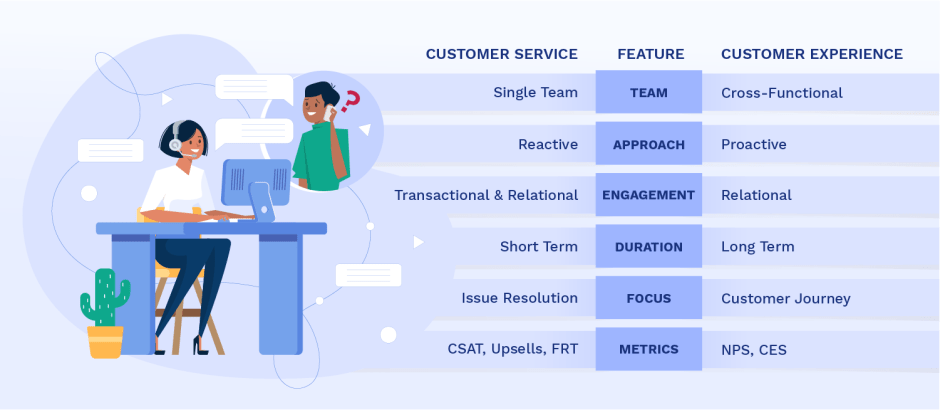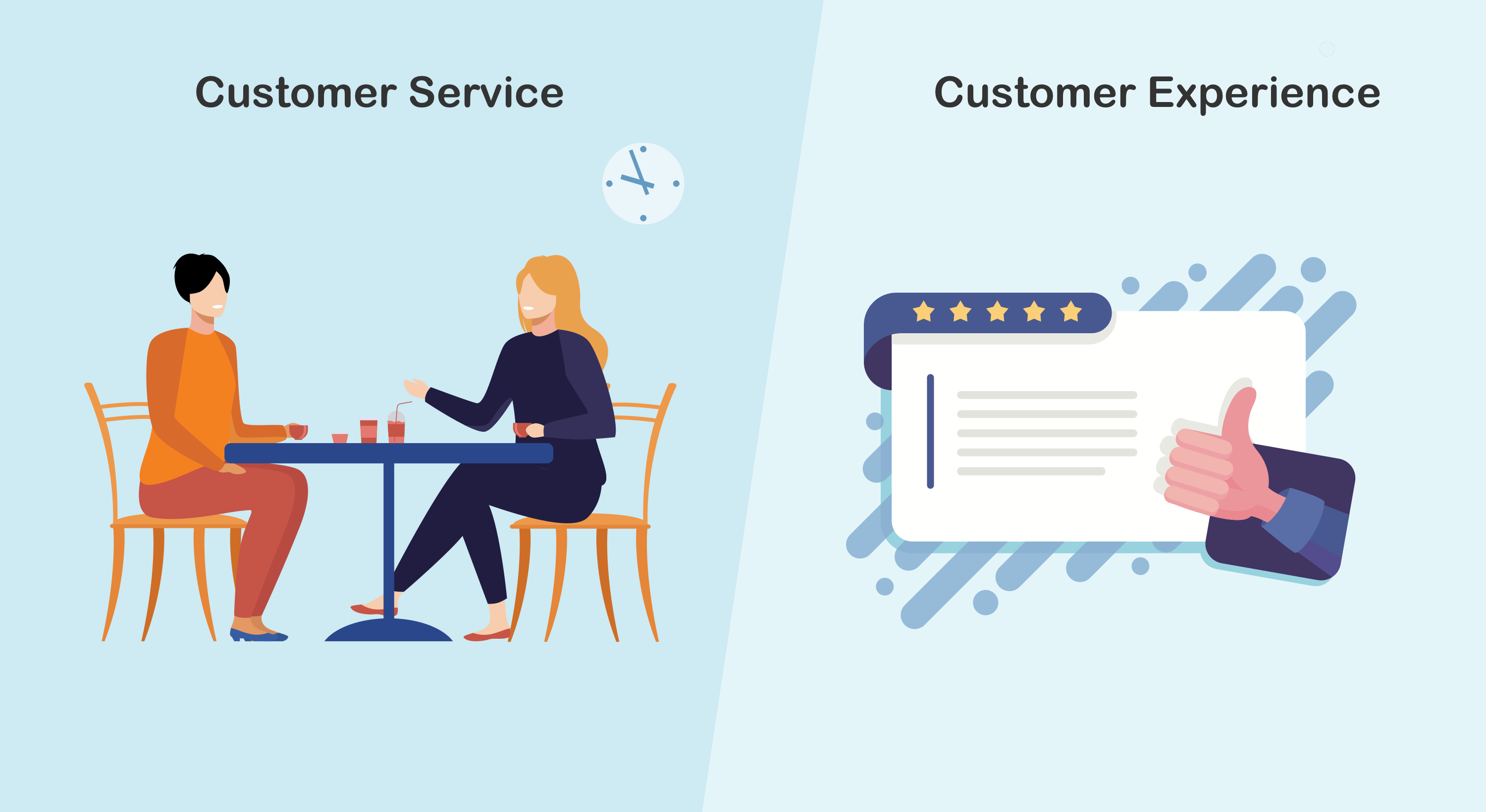Companies are pouring more resources than ever to be customer-centric. Two of the most popular concepts in the industry are Customer Service and Customer Experience. While the two often overlap, they are not the same and can’t be used interchangeably. Today’s we will find out the difference between the two and what constitutes excellent customer service and experience.
What is Customer Service?
Customer service is the assistance given to a customer during a buying cycle. Not necessarily after they make a purchase, a customer service representative might ensure you choose the right product, troubleshoot issues (as customer support). The goal of a customer service team is to ensure optimal problem solving and a great buying experience.
Patience, Product or service knowledge, empathy, soft skills are some of the most common virtues needed in a great customer service agent.
While Customer Service majorly focuses on being reactive and in some instances their duties also include being proactive. This means that Customer service teams focus not just on responding to issues but also actively making the first move to help customers to eliminate problems.
Some examples of great customer service are:
- Personalized and relevant communication
- Live Chat and Chatbot Support
- Social Media Support on Facebook, Twitter
- Prompt Responses
Tips to provide the best customer service
- Provide Omni Channel support: Prioritizing convenience for your customers is vital for your brand image and customer service. It can be offering 24/7 service through ChatBots or providing quick resolution and communication using a centralized platform like a Helpdesk.
- Data-driven decision making: Great and promising companies can fall apart if they only follow intuition. In today’s competitive market, leaders are always looking for hard facts to make business decisions. The same is applicable to customer service. It is important to track your important metrics such as Resolution Time, Ticket Backlog, CSAT, Breached SLAs to know the health and to keep improving.

- Collaborate: Collaboration within the Customer Service team is very essential. Agents can use private notes or tools integrated with Helpdesk to provide the best possible answers to their customer’s questions, especially when the ticket volumes are high.
What is Customer Experience?
Customer Experience is the umbrella under which customer service lives. Customer Experience or “CX” is the total journey of a customer’s interactions with a company and ties very closely to the brand image. It is an experience that a business provides to a customer that makes them come back for repeated business and drives loyalty.
With CX driving over two-thirds of customer loyalty, outperforming brand, and price combined, it is no surprise that company executives are effectively budgeting into strategic customer experience programs.
Customer Experience is a joint, cross-functional effort. This means the onus of providing a seamless experience falls on a lot of shoulders – Sales, Services, and Support. CX is also a proactive and long term effort and aims to foster a long-lasting and mutually beneficial relationship rather than fixing an immediate issue.
Customer Experience teams must possess problem-solving skills in addition to being data-driven and strategic. The ability to build and maintain relationships with external stakeholders and internal cross-functional team members is also essential.
Some examples of great customer experience are:
- Social listening – utilizing Facebook, Twitter to engage with customers
- Utilizing Surveys and feedback for continuous improvement
- Create an emotional connection with customers by going the extra mile – fast shipping, easy return policy, ease of completing purchases, and tracking order.
Tips to enhance Customer Experience
- Invest in technology: Promote self-service and easy channels – phones, emails, social media, chats, etc, for your users to reach you.
- Know Your Customers: Take time to know the customer journey and all the touchpoints when a user interacts with your brand and continually innovate and improve to fulfill their needs.
- Collaboration: Customer experience is a joint effort so CX teams need to nurture relationships with internal breaking cultural silos and at the same time external teams.
- Leverage Analytics: With the help of a powerful business intelligence software, it is easy now to measure customer experience metrics in real-time. Combine data from multiple sources – trade shows CSVs, CRM, Helpdesk, Project Management tools to measure your customer behavior, buying patterns, spends, and much more to make strategic decisions.
Customer Service Vs. Customer Experience

There are definitely various overlaps so it is easy to mistakenly consider them to be the same concept but there are some intricate differences between the two.
While Customer Service majorly is a single team effort, Customer Experience is cross-functional as with teams such as service, sales, marketing, professional services, product development taking part in providing customers with a great experience.
A major difference between them is that while customer service is reactive, customer experience is proactive. Customer Support efforts come into the picture when the customer isn’t satisfied or has an issue with a product or service. Conversely, customer experience aims to reach existing customers and new.
Customer Experience is also different in its customer approach – it is more relationship building whereas Customer Service is more transactional.
While Customer Service is responsible for customer retention over individual issue resolutions, Customer Experience takes into account for the complete customer journey.
Customer Experience looks at overall customer metrics such as Net Promoter Score and Customer Effort Score which tells you about customer loyalty whereas Customer Support looks at agent performance metrics such as CSAT(Customer Satisfaction Score), First Response Time, etc.
Conclusion
According to PWC, 42% of consumers worldwide would pay more for a friendly, welcoming experience, touting a positive experience with a brand to be more influential than great advertising. Today businesses can not do without expanding their efforts in building exceptional customer experience and customer service. If you’re on the path to exploring how this journey could be made simpler using a powerful suite of products, feel free to reach out to us.








